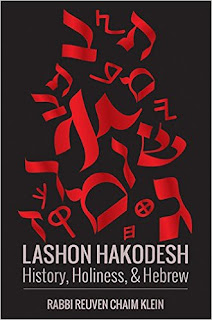Bridging Traditions: Demystifying Differences Between Sephardic and Ashkenazic Jews
Rabbi Haim Jachter
Maggid/OU Press / 515pp
Rabbi Haim Jachter’s “Bridging Traditions: Demystifying Differences Between Sephardic and Ashkenazic Jews" is an amazing collection of customs where Ashkenazi and Sephardi practices differ. Rabbi Jachter, a well-rounded and formidable authority in halacha from Teaneck, NJ, who I have enjoyed correspondence with over the years, goes through the history of each community’s practice in each of these areas with an emphasis on the modern-day practice. He also often shows us where the respectful and healthy boundaries for each community lies.
One example which is dear to my heart, is
whether a Sephardi who is praying in an Ashkenazi synagogue should recite kaddish in
accordance with the Sephardic wording or with the Ashkenazi wording. As Rabbi Jachter
points out, respectful boundaries and normative halacha should dictate that “when
in Rome do like the Romans” and therefore a Sephardi individual should probably recite
the Kaddish in accordance with Ashkenazi wording. Unfortunately, this is not
always the way it works, which is a rant of mine for another time. There are about
another two dozen different chapters dealing with such synagogue and prayer
related issues and divergence of customs.
Some of the other topics that are dealt with include: Shabbat issues, of most interest would be the chapter on the different customs on warming food on Shabbat, holiday issues such as kitniot on Pesach, soft matza, forty days of selichot, and more. Differences between Sephardim and Ashkenazim in Kashrut, Nidda, Aveilut, and more are discussed. There are also appendices on the difference between the Moroccan and Yemenite communities, though truth be told, the latter are not “Sephardim.” There is also a discussion on the status of Ethiopian Jews and Rav Ovadia Yosef’s controversial hetter declaring them Jewish without conversion, something that normative halacha does not (should not?) accept...another rant of mine for another time.
Each chapter is 2-4 pages long making it perfect for
those with attention span challenges, not to mention making it very enjoyable to
learn a lot with little time and effort. There is definitely something new for
readers of all levels. Uniquely written by an Ashkenazi rav of a Sephardic shul, this sefer is not merely recommended, it is a must have.


